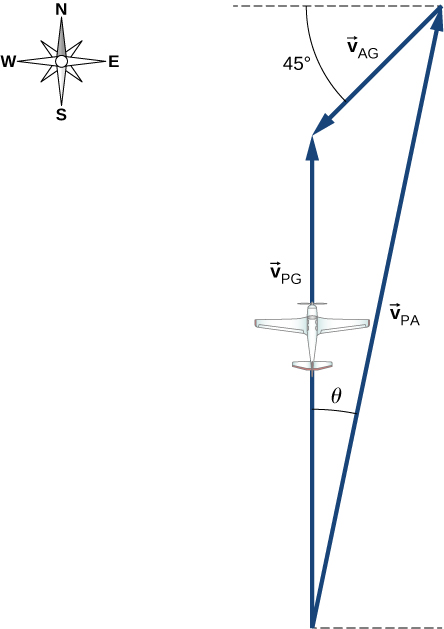| << Chapter < Page | Chapter >> Page > |

(a) Known quantities:
Substituting into the equation of motion, we obtain
(b) The angle east of north.
| Position vector | |
| Displacement vector | |
| Velocity vector | |
| Velocity in terms of components | |
| Velocity components | |
| Average velocity | |
| Instantaneous acceleration | |
| Instantaneous acceleration, component form | |
| Instantaneous acceleration as second
derivatives of position |
|
| Time of flight | |
| Trajectory | |
| Range | |
| Centripetal acceleration | |
| Position vector, uniform circular motion | |
| Velocity vector, uniform circular motion | |
| Acceleration vector, uniform circular motion | |
| Tangential acceleration | |
| Total acceleration | |
| Position vector in frame
S is the position vector in frame plus the vector from the origin of S to the origin of |
|
| Relative velocity equation connecting two
reference frames |
|
| Relative velocity equation connecting more
than two reference frames |
|
| Relative acceleration equation |

Notification Switch
Would you like to follow the 'University physics volume 1' conversation and receive update notifications?